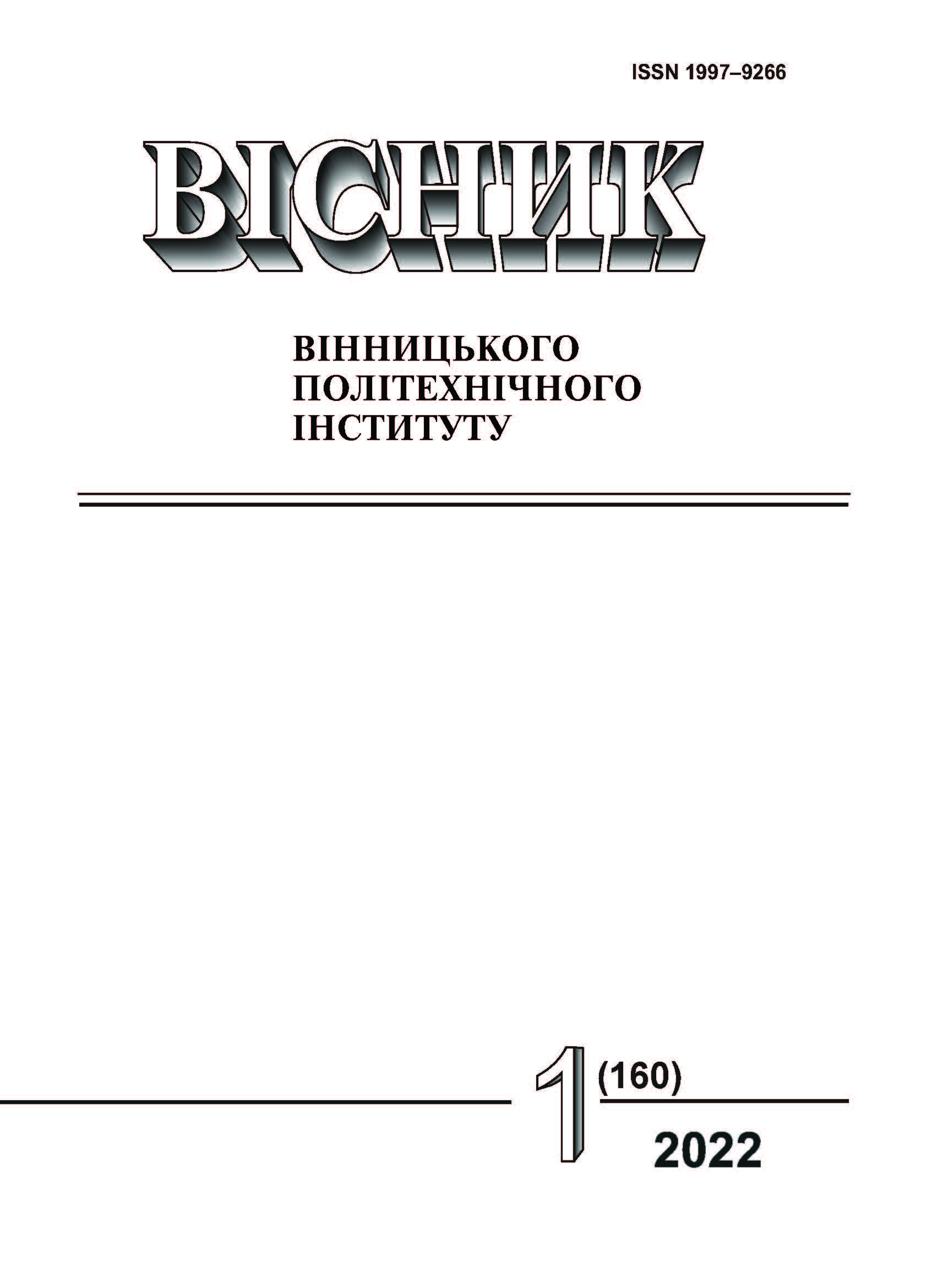Improving the Accuracy of Voltage Regulation on the Active Filter Capacitor
DOI:
https://doi.org/10.31649/1997-9266-2022-160-1-28-34Keywords:
electric network, low-pass filter, higher harmonics, reactive power, active filter, control systemAbstract
The control scheme of the active filter on the basis of the dq-theory with the block of automatic stabilization of voltage on the condenser containing the system of adaptive control of a delay in time and the filter of low frequencies is considered. The introduction of the delay can be implemented using a microcontroller that will automatically calculate the required delay factor and the output scale factor. The low-pass filter is tuned to the seventh harmonic, which allows you to adjust the delay in the range that provides the minimum value of the allowable error of voltage deviation. A study of the quality of voltage maintenance on the capacitor was also carried out using a set of measures. To improve the compensating capacity of the active filter, the sliding current averaging unit was set to the sixth harmonic in the case of a symmetrical load. The time response of the automatic voltage stabilization unit on the DC capacitor provides a stable charge / discharge process of the capacitor and a high level of compensation of higher harmonics without significant additional generation of active power in the network. It is shown that increasing the accuracy of voltage regulation on the capacitor of the power active filter allows to ensure the achievement of the minimum values of harmonic distortion and stable operation of the system. The transient reaction of the power active filter is determined by the control circuit of the output current of the filter. Therefore, its time response is chosen fast enough to track the current shape of the sinusoidal current. On the other hand, the speed of the control circuit of the capacitor voltage should not be too fast, and it is selected at least 10 times slower than the control circuit of the current filter current. Thus, these two control systems can be divided and designed as two independent systems and adjust each to individual characteristics.
References
J. Matas, L. Garcia de Vicuna, J. Miret, J. M. Guerrero, and M. Castilla, “Feedback linearization of a single-phase active power,” IEEE Trans. On Power Electrons, vol. 23, no. 1, рp. 116-125, 2008.
T. Thomas, and A. Jaffart, “Design and performance of active power filter,” IEEE Industry Applications magazine, 1998.
О. М. Закладний, А. В. Праховник, і О. І. Соловей, «Енергозбереження засобами промислового електропривода,» навч. посіб. Київ, Україна: Кондор, 2005, 408 с.
Rajesh K. Patjoshi, Kamalakanta Mahapatra, and Venkata Ratnam Kolluru, Real time Implementation of Sliding mode Based Direct and Indirect Current Control Techniques for Shunt Active Power Filter. National Institute of Technology Rourkela, India, 2015.
O. J. M. Smith, “Closer Control of Loops with Dead-Time,” Chemical Engineering Progress, no. 53, pp. 217, 1959.
D. Stanciu, M. Teodorescu, A. Florescu, and D. A. Stoichescu, “Single-phase active power filter with improved sliding mode control,” in 17th IEEE International Conference on Automation,Quality and Testing, Robotics (AQTR’10), May 2010, pp. 15-19.
Power electronics handbook: devices, circuits, and applications handbook, Muhammad H. Rashid, Ed., 3rd ed. p. cm. ISBN 978-0-12-382036-5 .
R. K. Patjoshi, and K. K. Mahapatra, “Performance comparison of direct and indirect current control techniques applied to a sliding mode based shunt active power filter,” in India Conference (INDICON), 2013 Annual IEEE, IIT Bombay, Dec. 2013, pp. 1-5.
К. І. Денисенко, І. С. Кутрань, В. О. Лесик, і Т. В. Мисак, «Збільшення швидкодії контуру слідкування за напругою накопичувального конденсатора трифазного паралельного активного фільтра,» Праці Інституту електродинаміки Національної академії наук України, вип. 55, 2020. ISSN 1727-9895.
М. Й. Бурбело, Ю. В. Лобода, і Д. Ю. Лебедь, «Система прямого керування струмом активного фільтра,» Вісник Вінницького політехнічного інституту, № 2, с. 69-75, Квіт 2021. https://doi.org/10.31649/1997-9266-2021-155-2-69-75 .
Downloads
-
pdf (Українська)
Downloads: 122
Published
How to Cite
Issue
Section
License

This work is licensed under a Creative Commons Attribution 4.0 International License.
Authors who publish with this journal agree to the following terms:
- Authors retain copyright and grant the journal right of first publication.
- Authors are able to enter into separate, additional contractual arrangements for the non-exclusive distribution of the journal's published version of the work (e.g., post it to an institutional repository or publish it in a book), with an acknowledgment of its initial publication in this journal.
- Authors are permitted and encouraged to post their work online (e.g., in institutional repositories or on their website) prior to and during the submission process, as it can lead to productive exchanges, as well as earlier and greater citation of published work (See The Effect of Open Access).





